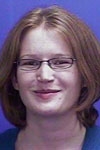Our People
 Since its inception, the Del Monte Institute has recruited dozens of researchers spanning specialties across various departments at the University and Medical Center. We have been innovative in collaborating to create joint appointments, allowing more faculty to join our research efforts. By combining their expertise with our myriad of resources, we strive to create a diverse space with researchers from various backgrounds and specialties. It is also of the utmost importance that our labs are equitable and inclusive. It is essential to forge a successful research engine that makes meaningful contributions to neuroscience.
Since its inception, the Del Monte Institute has recruited dozens of researchers spanning specialties across various departments at the University and Medical Center. We have been innovative in collaborating to create joint appointments, allowing more faculty to join our research efforts. By combining their expertise with our myriad of resources, we strive to create a diverse space with researchers from various backgrounds and specialties. It is also of the utmost importance that our labs are equitable and inclusive. It is essential to forge a successful research engine that makes meaningful contributions to neuroscience.
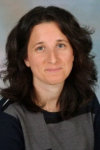

Self-motion perception and adaptability of vestibular perception

Neuroimaging techniques and computational tools to study the changes in brain functions and microstructures in animal models of human disorders


Photodynamic therapy and medical image processing

Understanding the health of children with medical complexity including children with IDD in a family context. He is studying the family, community, and health system factors that support family and caregiver resilience to better understand these children’s quality of life and healthcare utilization.
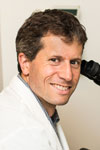

Includes ischemic and hemorrhagic stroke, brain aneurysms, cranial and spinal vascular malformations, moyamoya disease, and carotid atherosclerosis. He offers patients both endovascular and open microsurgical treatments for cerebrovascular disease.

Neurocognitive and communication deficits in autism and other developmental disabilities
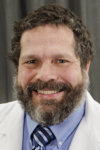

Signaling transduction mechanisms in the vascular system
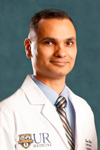
Includes open cerebrovascular and endovascular treatment for spinal and cerebrovascular disease including stroke, aneurysms, AVMs, carotid/vertebral disease and trigeminal neuralgia.


Focuses upon neurologic disorders in resource-limited tropical settings.


Multiphoton Laser Scanning Microscopy, novel in vivo imaging and measurement techniques, tumor biology, angiogenesis

Auditory Neuroscience; neurophysiological, behavioral, and computational studies of hearing; signal processing for hearing aids.


The interaction of vision, the vestibular system, and human disease on motion perception.
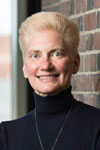
Biomedical ultrasound, acoustics, lithotripsy, biological effects of ultrasound.

Visual neuroscience; multi-sensory integration; neural coding; linking neurons to perception



How we process social information, make meaningful social connections, and how these processes vary across the full spectrum of health and psychiatric illness with a particular focus on schizophrenia-spectrum disorders using behavioral and neuroimaging (e.g., fMRI) methods.


Flexible allocation of the brain’s limited processing resources in attention, perception, and working memory
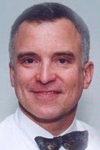




Identifing molecular regulators of long-range trafficking of protein cargoes to distinct sub-domains of polarized cells, such as neurons

Mechanisms supporting conceptual processing, language, and action function in patients with brain tumor or epilepsy.

Medical, Graduate, and Undergraduate Education




Understanding the neural mechanisms that mediate sensation and action with our hands.


Basic biological mechanisms of circadian synchrony and entrainment in health and disease. Understanding how circadian rhythms and sleep can enhance glymphatic, neuronal, and cerebrovascular function.

To define the transcriptional programs driving selective vulnerability and delayed neuron loss after stroke



Cochlear neurodegeneration, neural mechanisms for hearing in noise
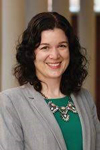
Investigating if/how the production of rapid, coordinated movements requires control circuitry that can bypass sensory feedback delays by providing an estimate of the consequences resulting from a motor command.

Understanding the mechanisms by which the extracellular matrix protein, fibronectin, affects cell and tissue functions that are critical for wound repair. We study both the structural mechanisms and intracellular signaling events that mediate cell and tissue responses to matrix fibronectin. In turn, we are using this information to develop novel technologies for tissue engineering, and therapeutic approaches to promote tissue regeneration in chronic wounds.


Synaptic pharmaco-physiology of vestibular efferent-afferent interactions

Programmed Cell Death (PCD) in cardiovascular disease (CVD). While great progress has been achieved in the unveiling of the molecular mechanisms of PCD, a new level of complexity, with important therapeutic implications, has begun to emerge. I am particularly interested in Pyroptosis, a highly inflammatory form of lytic PCD, and Ferroptosis, a form of PCD involved in metabolic imbalance and the perturbation of redox homeostasis.

In both pediatric epilepsy and general child neurology.

Neural mechanisms of visual recovery after stroke; optical correlates and molecular substrates of corneal wound healing and nerve regeneration; LIRIC

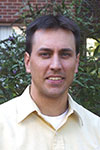
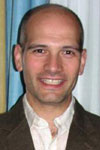

Visual perceptual alterations in psychosis, behavioral psychophysics, eye-tracking, functional neuroimaging, and conceptual foundations of cognitive science

How the performance of liquid metal batteries depends on transport in their liquid layers

The biology of neural progenitor cells in developing and adult mammalian brain

The electrophysiology of human sensation, perception and cognition, especially in naturalistic environments.
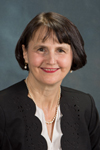
Environmental Medicine
Microbiology & Immunology
Lawrence Lab
Center for Inhalation and Flavoring Toxicological Research (CIFT)
NIH T32 Training Grant in Immunology
Pulmonary T32 Training Grant
Lung Biology and Disease Program
Del Monte Institute for Neuroscience
James P. Wilmot Cancer Center
Environmental Health Sciences Center
Institute for Human Health and the Environment
Delineating mechanisms by which environmental exposures during different life stages alter immune function

Peripheral nerve regeneration/degeneration and vascularized composite allotransplantation.



Optimizing the understanding, diagnosis and treatment of movement disorders with the use of neurophysiological techniques, and developing sustainable international collaborations that promote global equity in neurological education, research and patient care.

Role of cochlear outer hair cells in hearing and hearing loss

Mechanisms of neurotransmitter receptor function

Auditory and multisensory processing in human listeners, using behavioral and electrophysiological methods.




In vitro models of human lung and vascular barriers during inflammation

Optogenetic and photoreceptor replacement therapies to restore vision to the blind with particular emphasis on the challenges caused by the unusual anatomy and physiology of the fovea. Adaptive optics calcium imaging in the living eye to evaluate restored retinal function at the cellular scale in vivo.

Investigation of the molecules, receptors, and neural circuits that influence social interactions, including the actions of mammalian pheromones

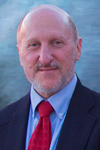
Key areas of clinical specialization and research have included Neuroimaging, Head and Neck imaging, Musculoskeletal MRI, MR and CT angiography.

Carbohydrate and protein recognition, molecular design, and biomolecular sensing

College-age adults with intellectual disabilities

Attention multisensory integration sensory and perceptual processing executive function




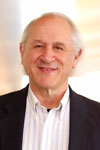

The neural computations that enable the perception of natural sounds, such as speech and music



Mechanisms of neuroinflammation and neurodegeneration within the CNS, primarily Glial Cells and Vascular components of the brain.

Elucidate the molecular mechanisms of divalent metal neurotoxicity and mitochondrial dysfunction in Alzheimer's disease pathogenesis


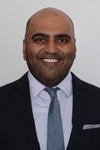
Experimental and Computational Approaches to Sensory Perception

Cortical Circuitry Underlying Memory-Guided Sensory Decisions
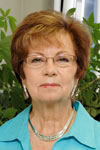


Visual psychophysics, high-resolution eye tracking and gaze-contingent technology to study spatial updating, foveal vision and control of attention and eye movements at the fine scale

Care and study of individuals with memory disorders


Using primarily human pluripotent stem cell models, we examine astrocyte development in normal and pathological conditions, the role of astrocytes in modulating response to injury or stress, the role of altered RNA processing and translation in neural development, and the utility of glial precursor cells and their astrocytic progeny for cell transplantation therapy.

Neural control of movement; Computing and experiment control systems; Mathematics and statistics in neuroscience data analysis.

Optical instrumentation, system engineering, optical coherence tomography

Organization and functions of the primate prefrontal cortex

Multisensory integration, social neuroscience and autism spectrum disorder
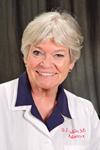
Chronic illness, Palliative Care, Long-term childhood cancer survivors, Bereavement, Integrative medicine, Biofeedback, Chronic pain, Bioethics
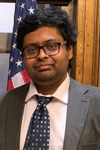
Develop a research program concentrating on identifying genetic modifiers of environmental factors in disease etiology using a combination of Drosophila genetics, cell culture, and rodent models

Imaging single neurons and neuron networks in the living eye in health and disease.


Vestibular systems, motor learning, physiological models, multi-sensory integration
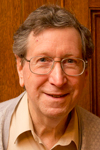
Neuron-neuroglia interactions

Impairments of perceptual function and organization in schizophrenia and other neuropsychiatric disorders, their relationship to symptom emergence (e.g., in terms of altered predictive coding, or altered contextual modulation) and the possibility of performing visual remediation of low- and mid-level visual disturbances in these conditions.

Exploring the understudied and novel mechanisms by which neuromodulators mediate the interactions between neurons, astrocytes, and microglia in both normal and disease states


Use virtual reality (VR), multimodal magnetic resonance imaging (MRI), and machine learning to elucidate the psychological and neural signatures of psychopathologies


Novel technologies, practice-based research, and palliative care in individuals with Parkinson disease and other movement disorders

Retinal degeneration and maladaptive plasticity in inner retinal circuits.

Schizophrenia, with a particular interest in the pathophysiology of positive symptoms

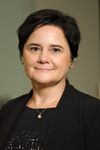
Clinical applications of advanced neuroimaging techniques such as functional MRI (fMRI), MR Spectroscopy (MRS), Diffusion Tensor Imaging (DTI), morphometry, Arterial Spin Labeling (ASL) and Dynamic Susceptibility Contrast (DSC)

Magnetic Resonance Imaging, Magnetic Resonance Angiography, Neuroimaging, Medical Image Processing

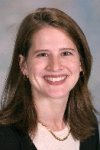
Menopause and memory problems, pregnancy and memory problems
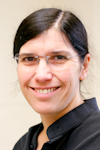



Molecular and signaling mechanisms of synaptic plasticity in memory formation and mental health



Faculty Spotlight

Lars A. Ross, PhD, is a research assistant professor of Imaging Sciences and Neuroscience at the University of Rochester Medical Center.
His research aims to understand how information from our senses is integrated and processed in the brain and how this impacts perception, cognition, and behavior. He is also interested in how these processes develop throughout life and differ in neurodevelopmental disorders such as autism.

Research News

RNA Discoveries Leading to Cutting-Edge Cures

Researchers Find Temporary Anxiety Impacts Learning
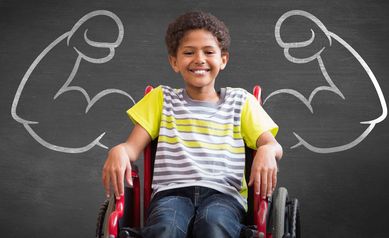
Newborn Screening Expansion Sparks Research on Early Duchenne Intervention

Modulating the Brain’s Immune System May Curb Damage in Alzheimer’s

Transforming Parkinson’s Care for Underserved Communities














